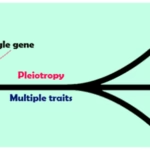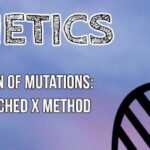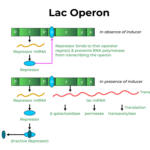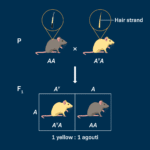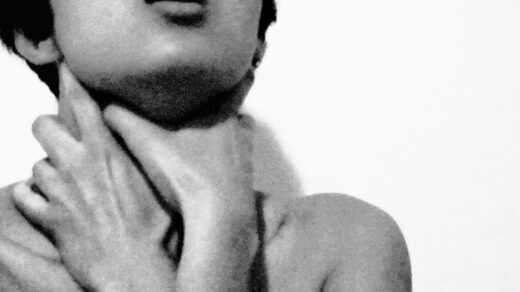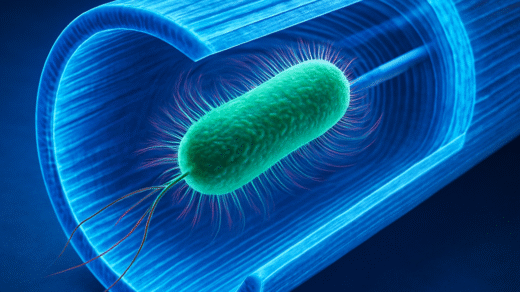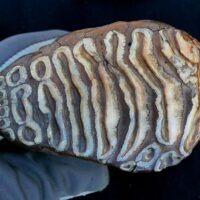Chromosomal Abbreviation
Numerical Aberrations
Numerical aberrations cause a change (addition or deletion) in the number of chromosomes.
They are further classified as euploidy or aneuploidy changes.
Euploidy
Euploidy is the condition when an organism gains or loses one or more complete sets of chromosomes, thus causing a change in the ploidy number. For example, triploid (3n), tetraploid (4n).
Aneuploidy
Aneuploidy is the condition when an organism gains or loses one or more chromosomes but not the entire set. For example, trisomy (2n + 1), monosomy (2n – 1).
In humans, euploidy conditions do not exist because the extent of abnormality is too large to sustain life. Aneuploidy conditions, however, are more common and are manifested in disorders such as Down syndrome, Klinefelter syndrome, and Turner syndrome.
Structural Aberrations
Structural aberrations involve a change in chromosome structure, including deletions, duplications, and rearrangements (inversions and translocations). Structural changes occur when chromosomes break and rejoin in different combinations from the original.
Unbalanced Structural Change
When there is a net loss or gain of chromosomal segments, the change is called an unbalanced structural change.
Balanced Structural Change
When there is no net loss or gain of chromosomal segments but only a rearrangement, it is called a balanced structural change. Balanced changes usually do not show abnormal phenotypes, while unbalanced changes do.
Structural Changes in Humans
Structural changes are seen in humans and manifest in disorders such as Cri-du-chat syndrome, Wolf-Hirschhorn syndrome, Prader-Willi syndrome, and Angelman syndrome.
NUMERICAL ABERRATIONS
Numerical aberrations involve changes in the number of chromosomes within a cell. These changes can have profound effects on development and health. Numerical aberrations are primarily categorized into two types:
Euploidy and Aneuploidy.
1. Euploidy
Definition: Euploidy occurs when an organism gains or loses entire sets of chromosomes, resulting in a change in its overall ploidy number.
Examples:
Triploidy (3n):
An organism with triploidy has three complete sets of chromosomes instead of the normal two. For example, in humans, this would result in a total of 69 chromosomes (3 sets of 23).
Triploidy can occur due to errors in fertilisation, such as when an egg is fertilized by two sperm cells or when an egg or sperm cell is diploid instead of haploid.
Impact: In humans, triploidy usually leads to severe developmental abnormalities and is often incompatible with life, resulting in miscarriage or death shortly after birth.
Tetraploidy (4n):
Tetraploidy involves four complete sets of chromosomes. In humans, this would mean 92 chromosomes.
This condition can arise from the failure of cell division after DNA replication, leading to cells that contain twice the normal chromosome number.
Impact: Like triploidy, tetraploidy is typically lethal in humans. Embryos with tetraploidy usually do not survive to term.
Occurrence in Humans: Euploidy conditions such as triploidy and tetraploidy are not viable in humans due to the extensive genetic imbalance, making survival impossible.
2. Aneuploidy
Definition: Aneuploidy is the presence of an abnormal number of chromosomes, either more or fewer than the normal diploid number, but not involving entire sets of chromosomes.
Examples:
Trisomy (2n + 1):
Trisomy occurs when an individual has an extra chromosome, resulting in three copies of a particular chromosome instead of the usual two.
Down Syndrome (Trisomy 21) Chromosome Involved: Chromosome 21.
Characteristics: Individuals with Down syndrome have three copies of chromosome 21, resulting in 47 chromosomes in total.
Symptoms: Features include intellectual disability, characteristic facial appearance (such as a flat facial profile and upward slanting eyes), heart defects, and developmental delays.
Incidence: Down syndrome is one of the most common chromosomal abnormalities, occurring in approximately 1 in 700 live births.
Trisomy 18 (Edwards Syndrome):
Chromosome Involved: Chromosome 18.
Characteristics: Trisomy 18 is characterised by severe developmental delays, heart defects, and a high rate of mortality in infancy.
Symptoms: Physical features include a small head (microcephaly), clenched fists with overlapping fingers, and a small jaw (micrognathia).
Incidence: Edwards syndrome occurs in about 1 in 5,000 live births.
Trisomy 13 (Patau Syndrome):
Chromosome Involved: Chromosome 13.
Characteristics: This condition leads to severe intellectual disability, heart defects, and other life-threatening abnormalities.
Symptoms: Common features include cleft lip/palate, polydactyly (extra fingers or toes), and microphthalmia (small eyes).
Incidence: Patau syndrome is rarer, occurring in about 1 in 16,000 live births.
Monosomy (2n – 1):
Monosomy occurs when an individual has only one copy of a particular chromosome instead of the usual two.
Turner Syndrome (Monosomy X):
Chromosome Involved: The X chromosome.
Characteristics: Turner syndrome occurs in females who have only one X chromosome, leading to a total of 45 chromosomes.
Symptoms: Features include short stature, a webbed neck, delayed puberty, infertility, and certain heart and kidney abnormalities.
Incidence: Turner syndrome occurs in about 1 in 2,500 female births.
Monosomy 21:
Chromosome Involved: Chromosome 21.
Characteristics: This is a rare and usually lethal condition where an individual has only one copy of chromosome 21.
Impact: Monosomy for most autosomes (non-sex chromosomes) is typically incompatible with life, often resulting in early miscarriage.
Occurrence in Humans: Aneuploidy is relatively common in humans and is associated with various syndromes and developmental disorders. Unlike euploidy, certain aneuploidy conditions, such as Down syndrome and Turner syndrome, are compatible with life, although they often result in significant health challenges.
Key Points
Impact: Numerical aberrations can lead to a range of developmental abnormalities, intellectual disabilities, and physical malformations, depending on the specific chromosomes involved and the nature of the aberration.
Detection: These abnormalities can be detected through genetic testing methods such as karyotyping, which can identify the number and structure of chromosomes in cells.
Viability: The viability of an organism with a numerical aberration depends on the severity and nature of the chromosome change. Larger-scale changes, such as those seen in euploidy, are generally non-viable in humans, while smaller-scale changes, such as those in aneuploidy, may result in viable but affected individuals.
STRUCTURAL CHROMOSOMAL ABERRATIONS
So far, we have described the types and effects of numerical chromosomal changes. We also saw that these syndromes can be caused by certain types of structural changes. In this section, you will learn the different structural changes and their consequences.
Deletions
A deletion refers to the loss of a segment of a chromosome. This leads to the loss of the genes present in the missing region. A single break in the chromosome leads to the loss of the terminal segment and is called terminal deletion. Intercalary deletion, however, involves two breaks in the chromosome, loss of the segment, and rejoining of the two chromosomal parts.
Very large deletions are usually lethal because the monosomic condition of the large number of genes of the missing fragment reaches the level of genetic imbalance that cannot sustain life. Usually, any deletion resulting in the loss of more than 2% of the genome has a lethal outcome. Microdeletions, however, are reported and documented for specific disorders.
Cri-du-chat Syndrome
This syndrome results from a deletion on the short arm of chromosome 5. It is also known by other names such as 5p deletion syndrome and Lejeune’s syndrome. The disorder gets its name from the characteristic cat-like cry of affected infants. Described first by Jérôme Lejeune in 1963, this disorder has an incidence of 1 in 25,000 live births. This disorder, being autosomal, should affect males and females in equal frequencies, but incidence is seen to be more in females by a ratio of 4:3 of females to males affected.
The deletion occurring on the short (p arm) arm of chromosome 5 varies in different affected individuals. The phenotypic effects are also shown to vary between individuals. Most cases show deletion of 30 to 60% of the terminal region of the short arm. Studies show that larger deletions tend to result in more severe intellectual disability and developmental delay than smaller deletions.
Affected individuals characteristically show a distinctive, high-pitched, catlike cry in infancy with growth failure, microcephaly, facial abnormalities, and mental retardation throughout life. Some common clinical manifestations are:
Cry that is high-pitched and sounds like a cat
Downward slant to the eyes
Low birth weight and slow growth
Low-set or abnormally shaped ears
Mental retardation (intellectual disability)
Partial webbing or fusing of fingers or toes
Slow or incomplete development of motor skills
Small head (microcephaly)
Small jaw (micrognathia)
Wide-set eyes
Duplications
Duplications, like deletions, can cause abnormal phenotypic effects. They usually arise by errors in homologous recombination (unequal crossing-over). Duplications have their importance not only in medical genetics but also in evolutionary genetics. The presence of an extra copy of the gene virtually makes it free of selection pressure. Thus, it contributes to the diversification of protein functions resulting in families of proteins. Proteins of such families have related functions differing in the task they are specialized for. A classic example is that of the globin genes. Different globin proteins express during different times of development, each of which is specialized to transport oxygen.
Charcot–Marie–Tooth (CMT) Disorder
This disorder results from duplication in the short arm of chromosome 17 in the region 17p12. It is a hereditary motor and sensory neuropathy that affects the nerve cells of the individual. Affected individuals typically show loss of touch sensation and muscle tissue. The chromosomal basis of this disorder is varied, with 17p12 duplication being one of the causes. The severity and symptoms shown differ depending on the region affected and the presence of other chromosomal abnormalities associated with the duplication. In CMT type 1A, the duplication causes more of the protein to be produced from the genes in that region. This causes the structure and function of the myelin sheath around nerve fibers to be abnormal, causing various clinical manifestations such as:
Weak feet and lower leg muscles
Foot deformities (e.g., high arch)
Difficulty with fine motor skills due to muscle atrophy
Mild to severe pain as age progresses
May lead to respiratory muscle weakness
Robertsonian Translocation
Translocations generally do not result in loss of genetic material. Robertsonian translocations, however, result in the loss of small parts of the chromosomes involved. The fusion of two acrocentric chromosomes with the subsequent loss of the two short arms is termed Robertsonian translocation or centric fusion. Although this translocation causes loss of the short arms, it is maintained as a balanced translocation. This is explained by the fact that the genes on the short arms are most rRNA genes that are present in many copies on other chromosomes; thus, deletion of these copies doesn’t have much phenotypic manifestation. This aberration usually does not show any abnormal phenotype. Their effects are only seen in the next generation due to the production of abnormal gametes. Balanced changes cause disturbances during meiotic segregation. Due to this, the resulting gametes end up with a loss of chromosomes or gain chromosomes.
Reciprocal Translocation
Reciprocal translocation involves breaks in two chromosomes and the subsequent exchange of segments between the two chromosomes. Reciprocal translocations do not change the number of chromosomes. However, they may change the size and type of chromosome if the segments being exchanged differ in size. Reciprocal translocations involving chromosomes 11 and 22 are fairly common in the population. Reciprocal translocations can give rise to deletion-duplication conditions and can cause disorders associated with such conditions. However, as in the case of Robertsonian translocation, an individual possessing the translocation himself would not show any abnormal phenotype. Due to disturbances during meiotic segregation of these translocated products, individuals of the next generation have a possibility of showing abnormal phenotypes.
Inversions
An inversion is a condition wherein a segment of a chromosome is inverted. This is caused by two breaks in the chromosome and the subsequent rejoining in a reverse manner. This changes the order of genes on that chromosome and does not cause any changes in the chromosome number. Depending on the involvement of the centromere, inversions are of two types – pericentric and paracentric.
Pericentric inversions occur when the inverted segment includes the centromere. The product after inversion can differ significantly in arm length and thus change the type of chromosome (e.g., sub-metacentric to metacentric).
Paracentric inversions occur when the inverted segment does not include the centromere. The product after inversion remains the same type as the original except for a change in the order of genes.

ADVERTISEMENTS
ADVERTISEMENTS
DUE TO SOME ISSUE I CAN’T ABLE TO PROVIDE YOU ALL THE STRUCTURAL IMAGES
SO, HERE YOU CAN ONLY GET THE NOTES
AND FOR THE STRUCTURAL IMAGES
GO TO THE BROWSER AND SEARCH


